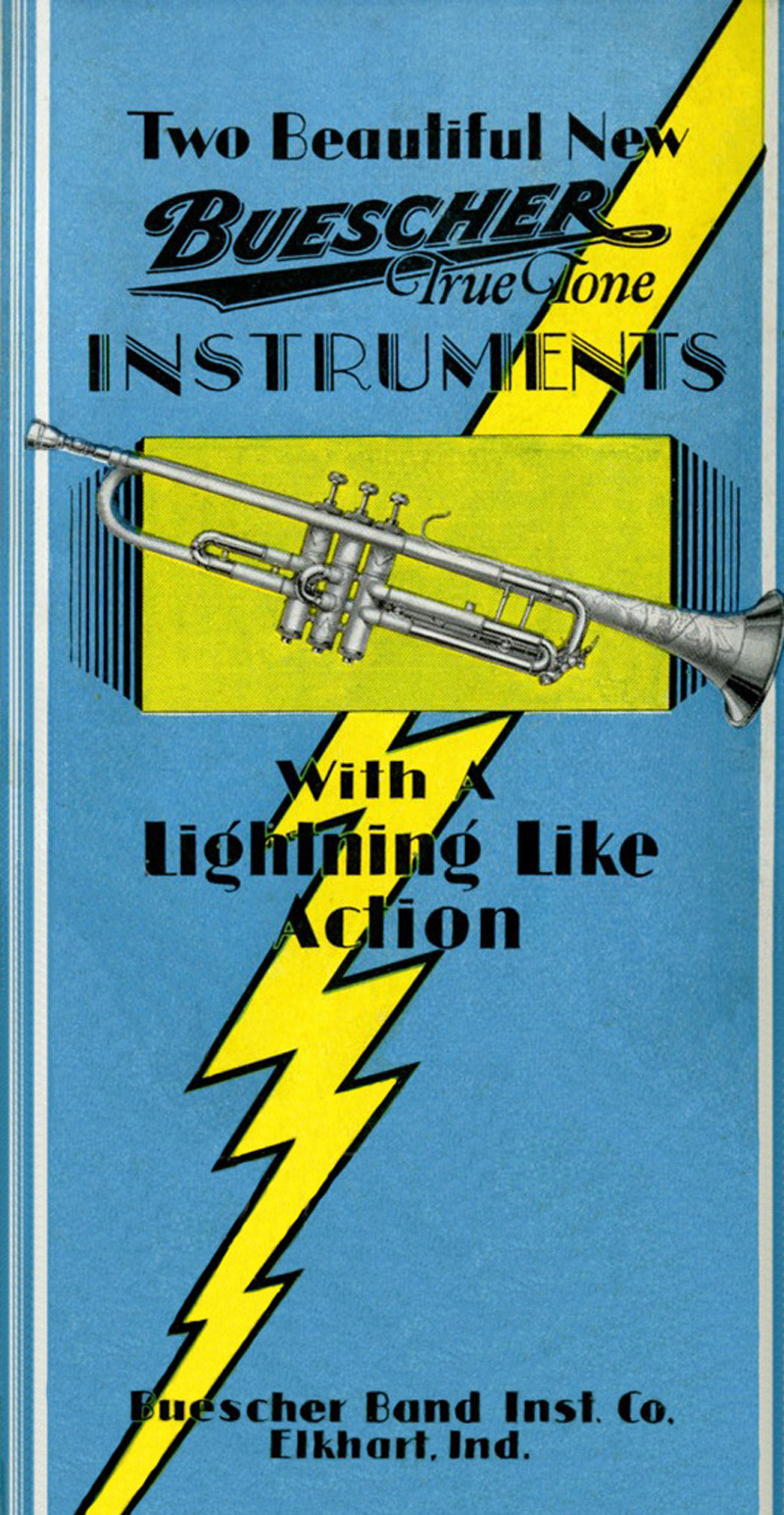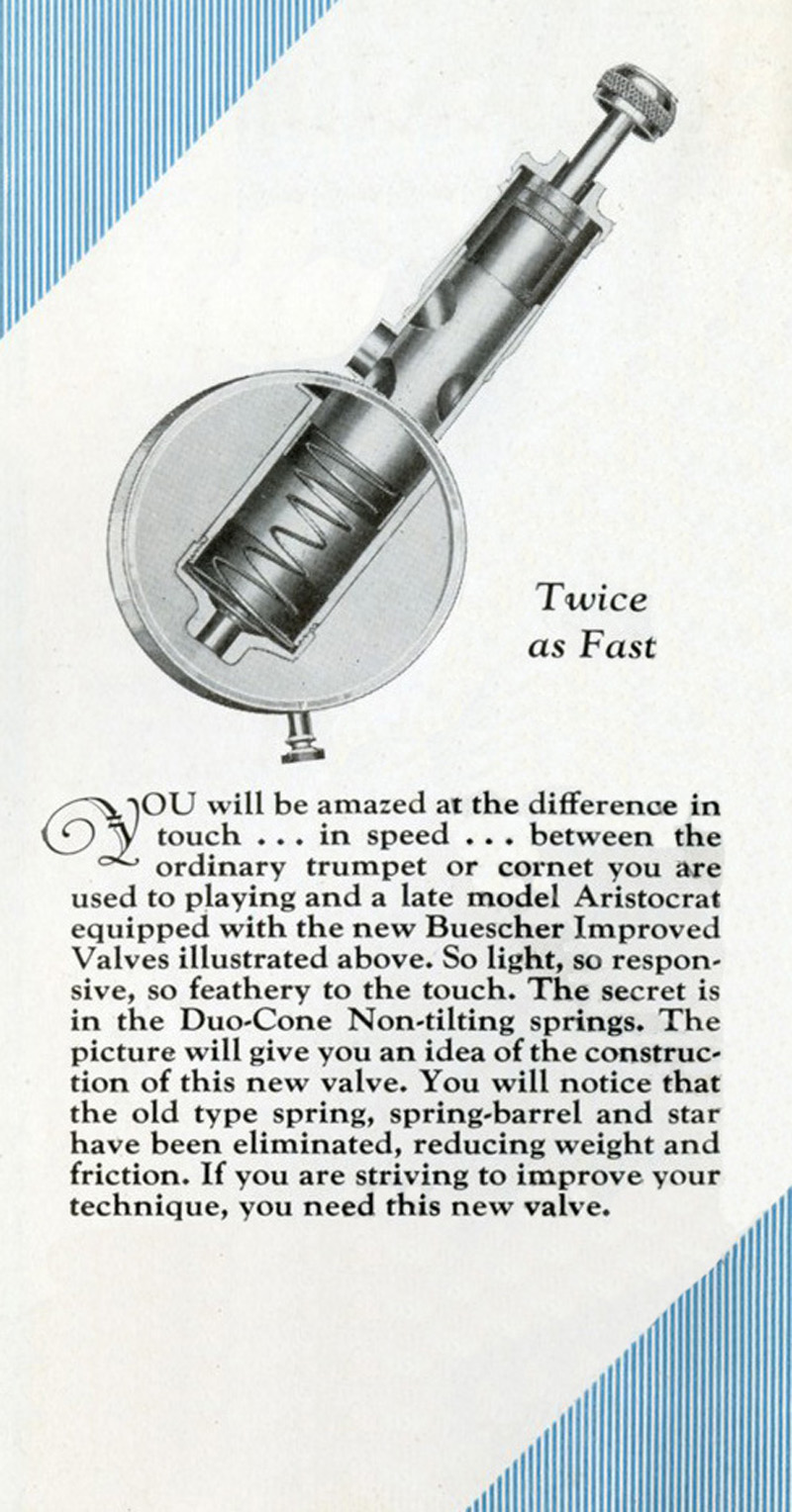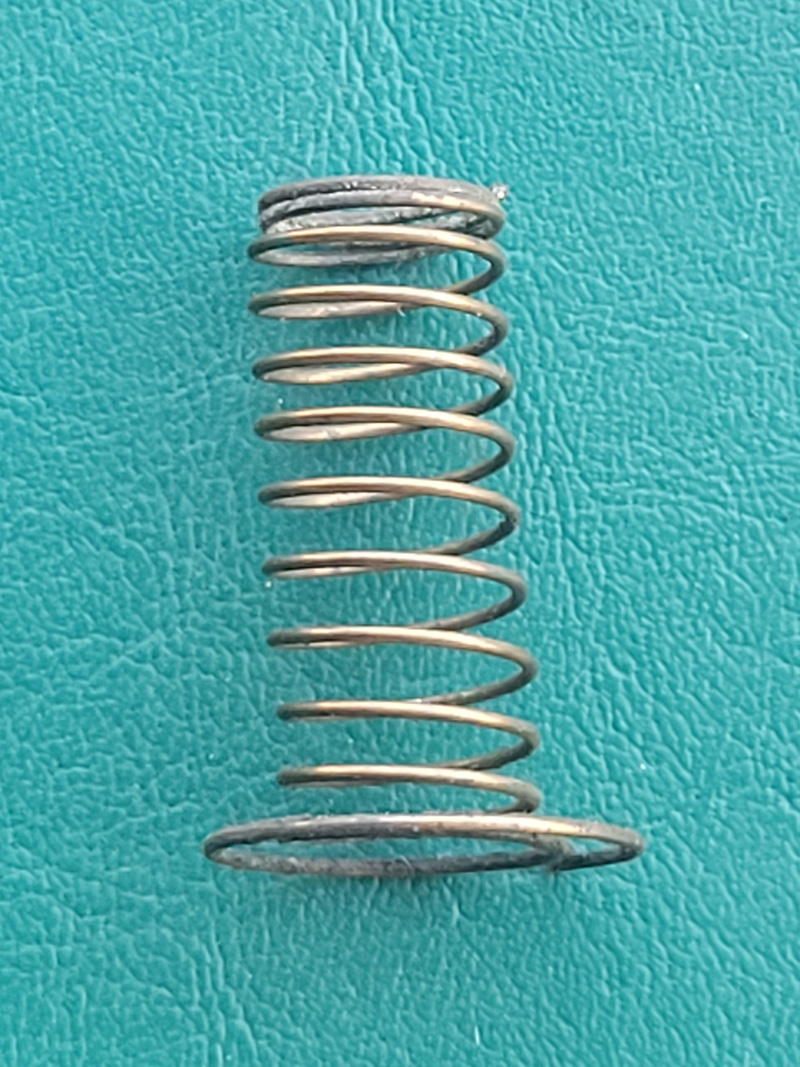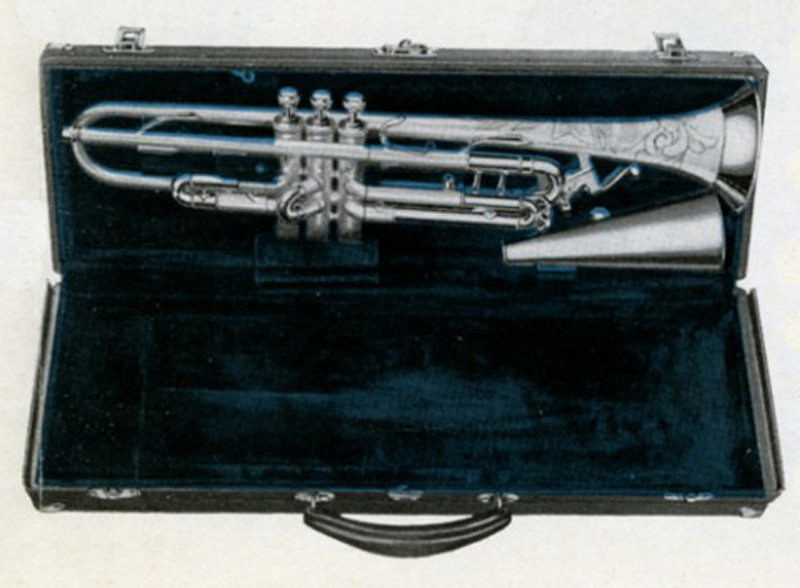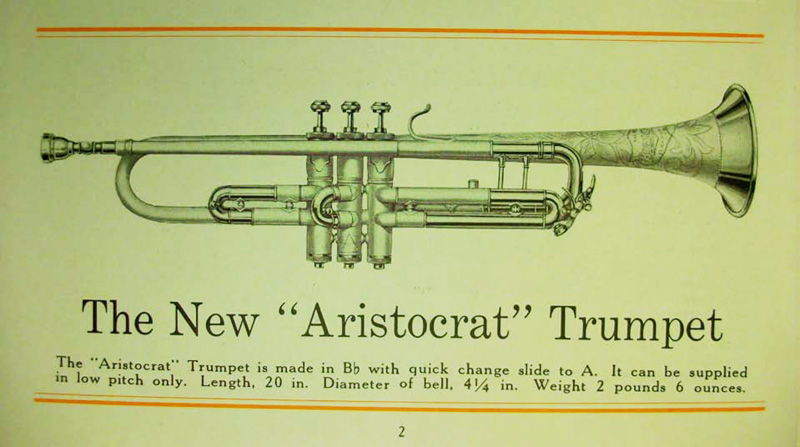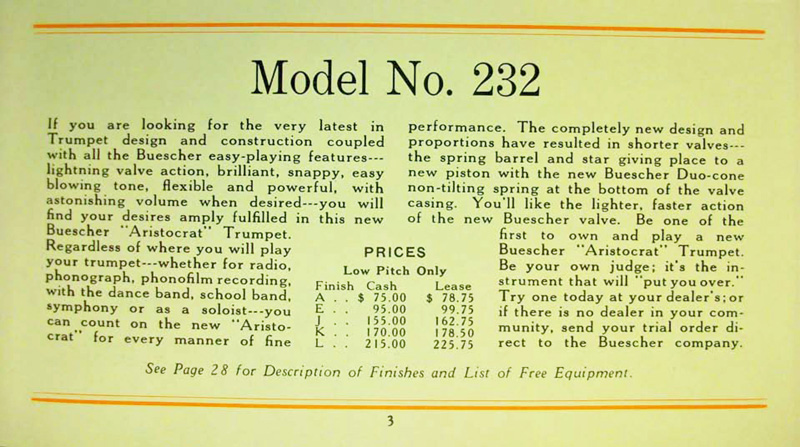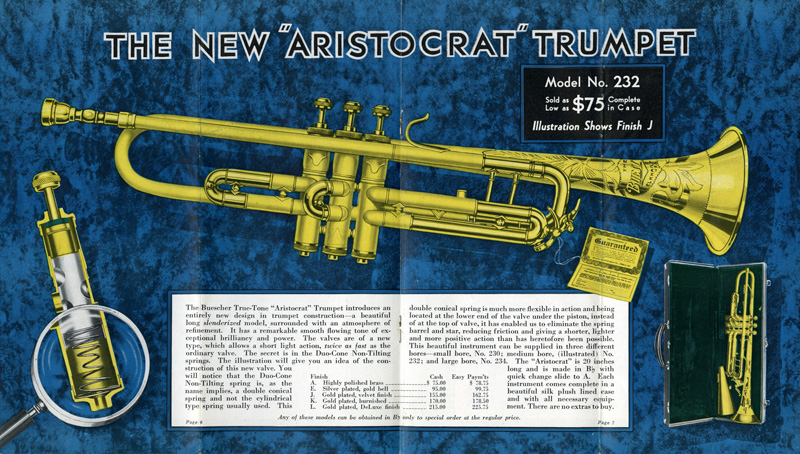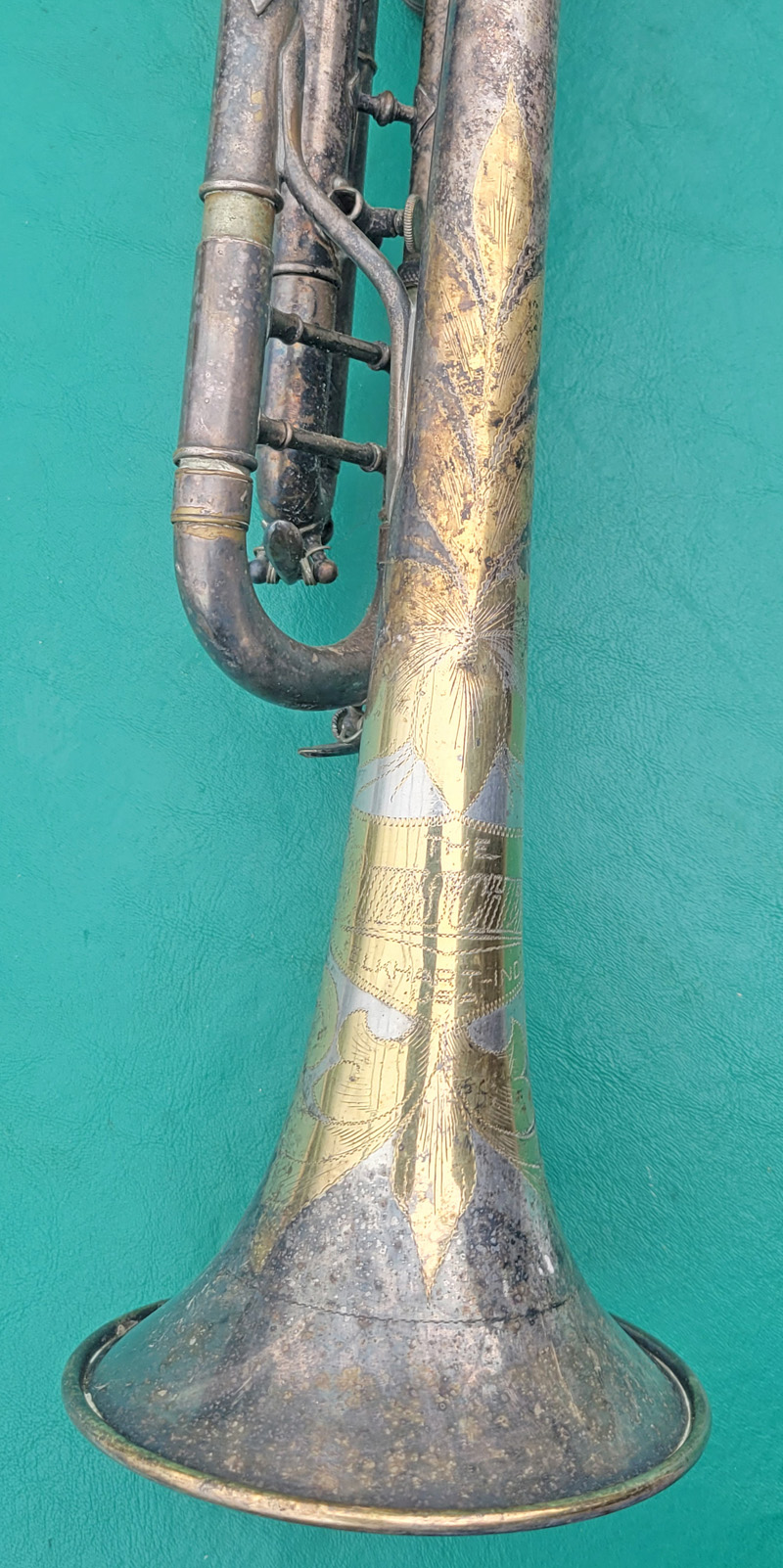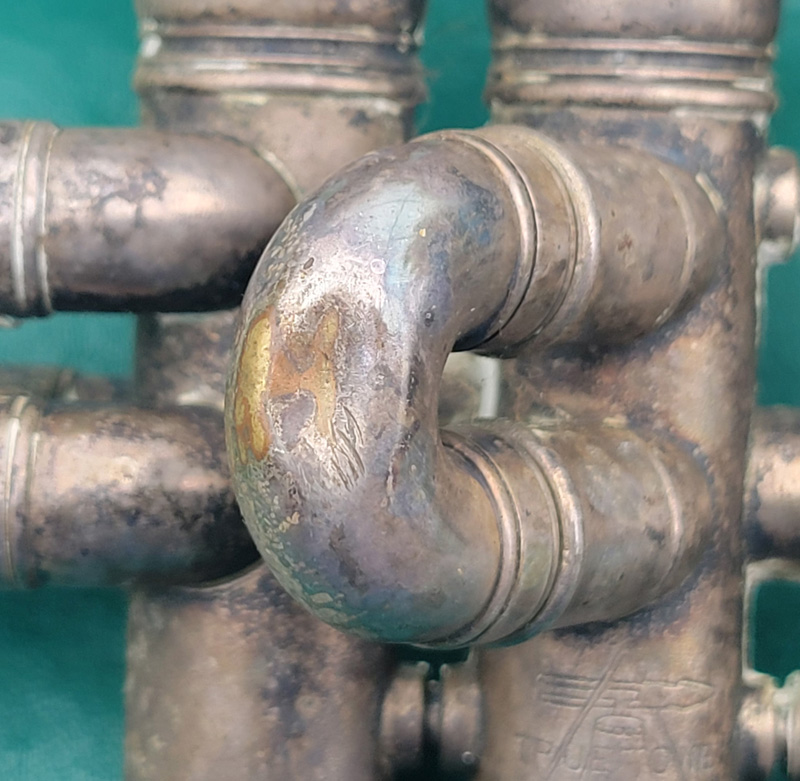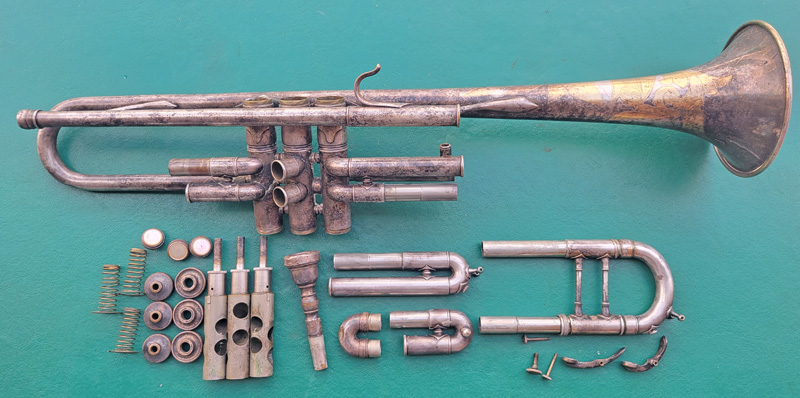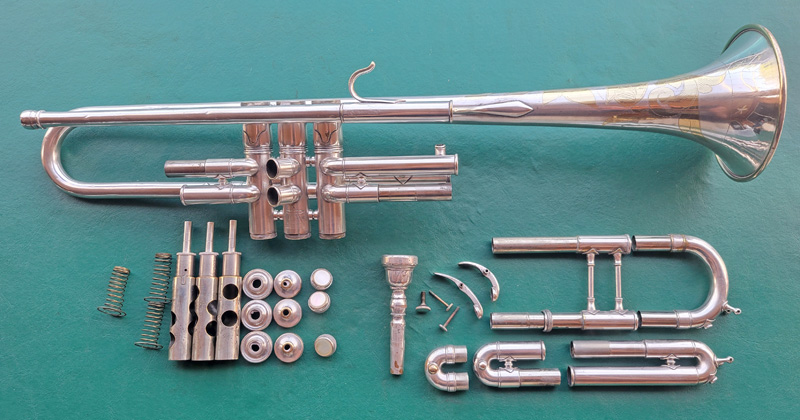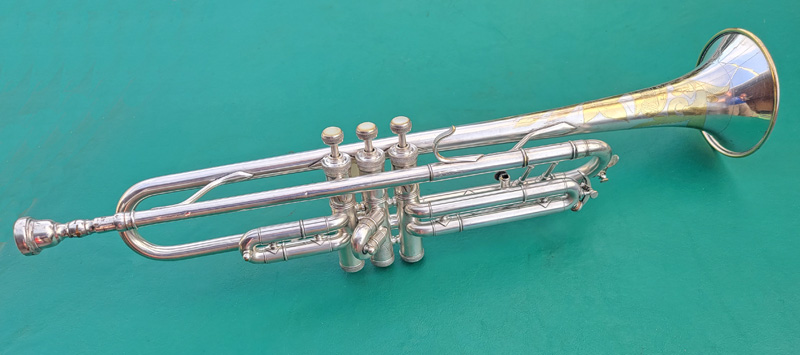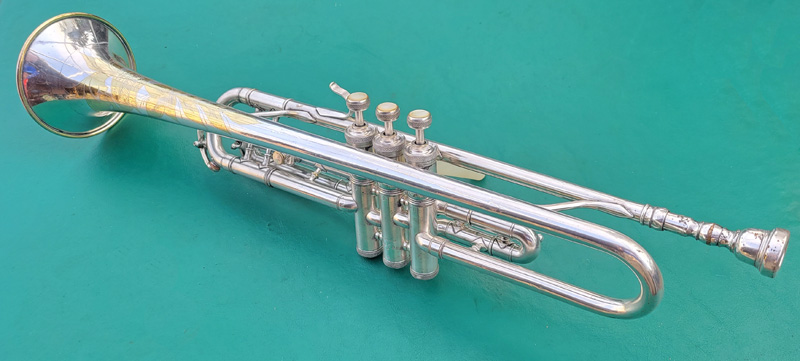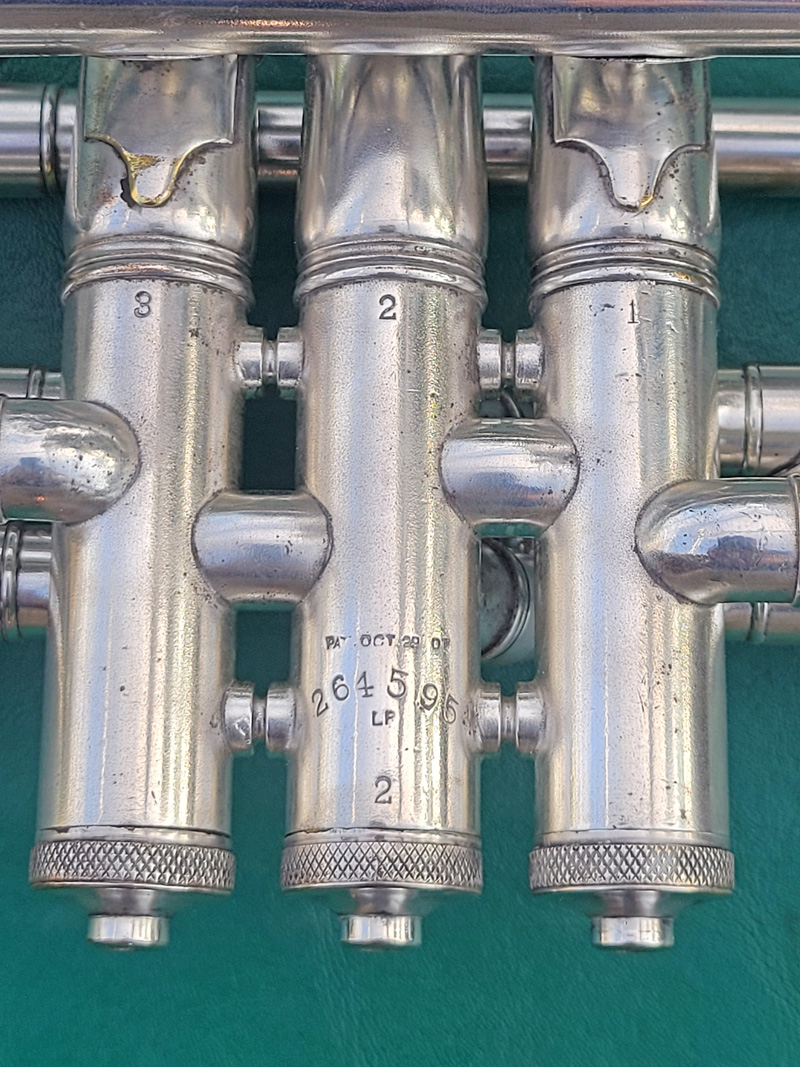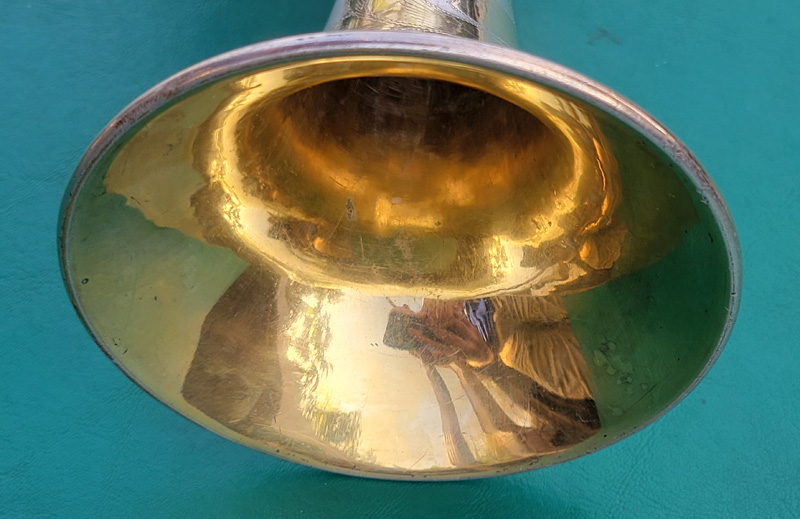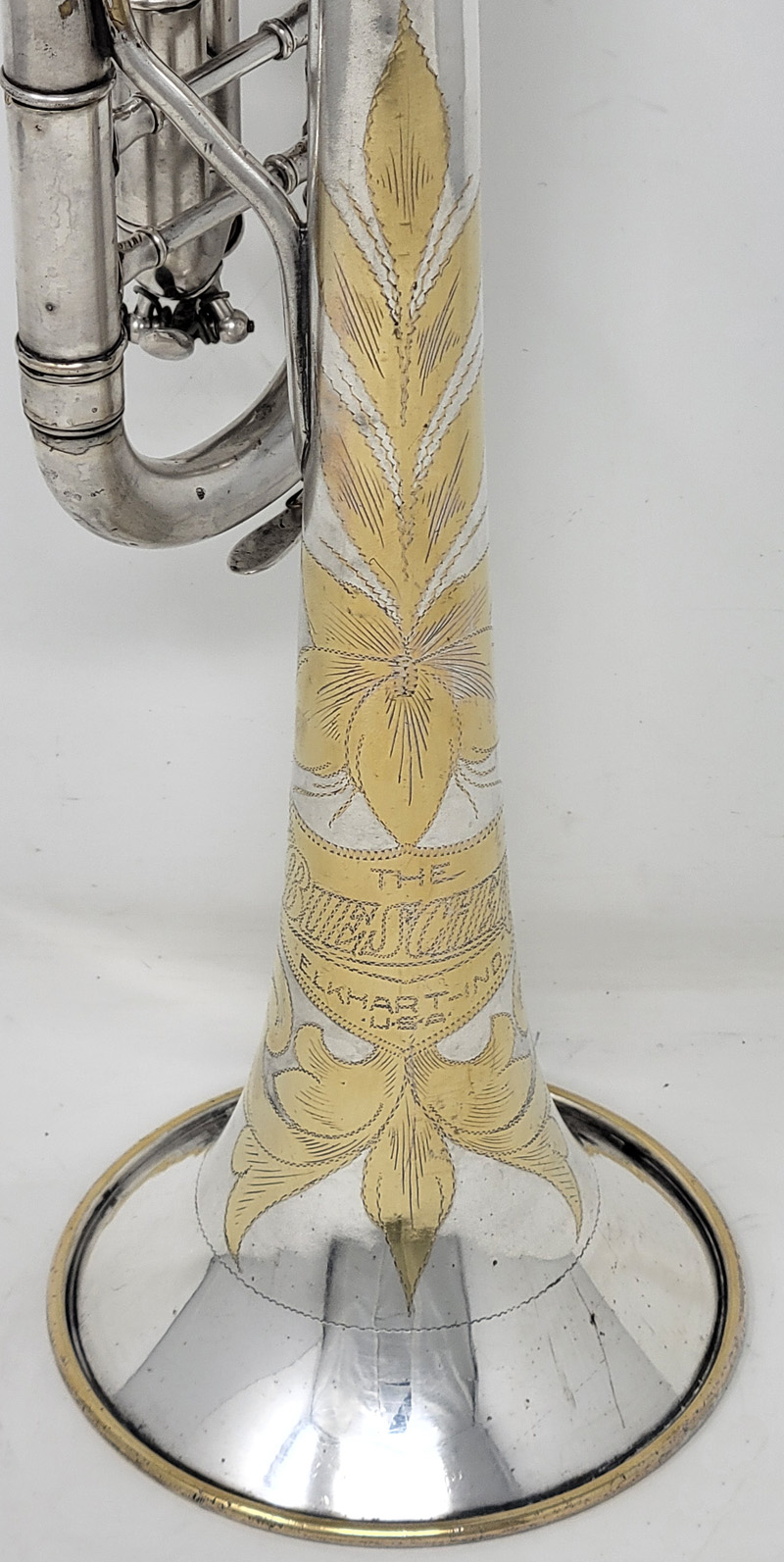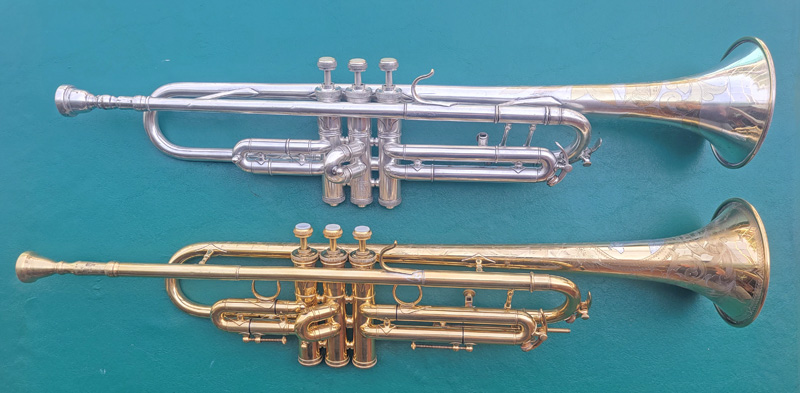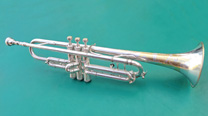 |
Buescher Aristocrat Trumpet |
|
|
Buescher Band Instrument Co. Model: 232 Following Conn's introduction of the New Era trumpet in 1928, many other band instrument makers quickly came out with their own version of the narrow-profile design. Since Buescher was owned by Conn, they likely had their own design in the works, but had to wait for a year to introduce it. Once the New Era model became popular, everyone else wanted to copy this new fad. The Buescher Aristocrat came out in 1929 and in most respects is a copy of the Conn. By the time this example was made in 1931, they had three models: the small bore 230, medium bore 232, and large bore 234. Below is the cover page from a 1929 brochure.
Many of the 1930s trumpets and cornets started using bottom-sprung valves. They always touted it as an improvement, yet it would seem more like a cost-cutting measure by reducing some parts. The valves were lighter, so perhaps the action would have been a little faster [twice as fast is doubtful].
Here is one of the springs that came with this one. It doesn't match the original with the wider top, so perhaps these have been replaced over the years.
Here is a 1929 image showing the case and mute from that period.
1930 catalog image for the model 232. The weight shown included the mouthpiece.
1931 brochure
Here are some views of the trumpet before restoration began.
All apart and ready for restoration. The tuning slide was later separated into its two parts. The nut on the bottom branch of the tuning slide allows for a quick change to A.
Most sellers online have no idea what they have, but this description was so humerous I just had to include it. The serial number was obvious in one of the photos so not sure why they didn't just add all the numbers they could find to the description.
Now all cleaned up and ready for assembly!
Back together and playing well.
The serial number puts this at about 1931 and for a short period in 1930-31, all the 232 trumpets were marked with "2". The 1907 patent is for the Split-no-tone bell that gets slightly thicker near the rim.
Buescher did a really good job with the gold plating as they generally do not wear much.
Here is a comparison of the Buescher Aristocrat with the Conn New Era with the bells set in the same location. The bell diameters are the same, yet the Buescher has a longer bell and the Conn a longer lead pipe. The Buescher valves are much closer to the bell.
|
